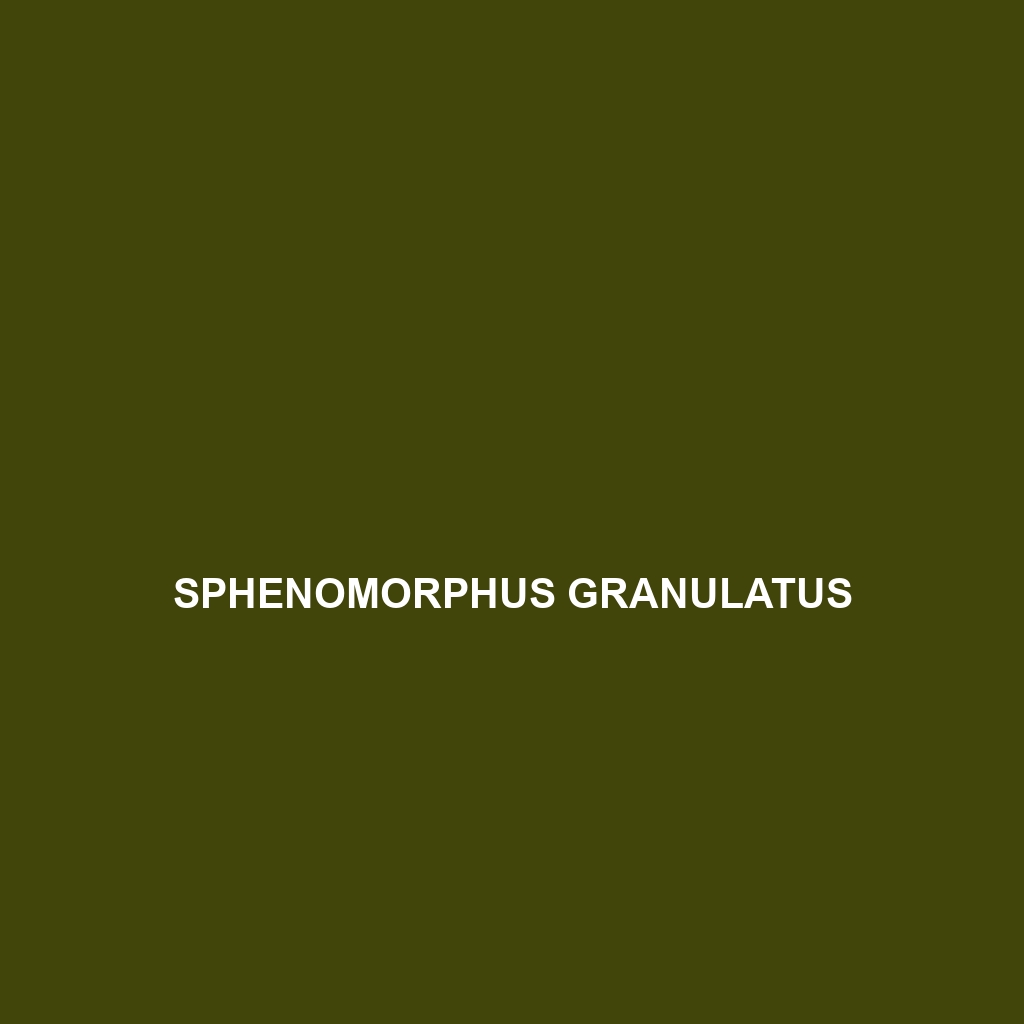Granulated Skink (Sphenomorphus granulatus): This slender, diurnal skink thrives in humid tropical and temperate forests of Southeast Asia, featuring a distinctive granular skin texture and a diet primarily of insects. With a notable ability to mimic dangerous snakes and regenerate its tail, the Granulated Skink plays a crucial role in controlling insect populations and maintaining ecological balance.
Tag: tropical ecosystem balance
Sphenomorphus cinereus
<p>The <b>Ashy Skink (Sphenomorphus cinereus)</b> is a tropical and subtropical skink known for its slender body and distinctive grey to brown coloration, thriving in humid rainforest environments of Southeast Asia. This diurnal insectivore plays a vital role in controlling insect populations while exhibiting fascinating behaviors and minimal parental care postpartum.</p>
Proctoporus otishi
<b>Proctoporus otishi</b> is a slender, diurnal lizard native to the tropical rainforests of Peru, measuring 20 to 30 cm in length and known for its vibrant coloration and unique dorsal patterns. This insectivorous species plays a vital role in its ecosystem by contributing to insect population control and exhibits fascinating courtship behaviors during its reproductive cycle.
Proctoporus otishi
<b>Proctoporus otishi</b> is a slender, diurnal lizard native to the tropical rainforests of Peru, measuring 20 to 30 cm in length and known for its vibrant coloration and unique dorsal patterns. This insectivorous species plays a vital role in its ecosystem by contributing to insect population control and exhibits fascinating courtship behaviors during its reproductive cycle.
Nactus aktites
<p>Discover the <b>Nactus aktites</b>, commonly known as the Pacific Gecko, a vibrant inhabitant of the <i>South Pacific Islands</i> thriving in rainforests and coastal environments. This nocturnal species, measuring 15-20 cm, plays a vital ecological role as an insectivore, effectively controlling insect populations while exhibiting unique adaptations such as color change for camouflage and tail autotomy for escape.</p>
Lycodon chrysoprateros
<b>Lycodon chrysoprateros</b>, or the chrysoprateros wolf snake, is a slender nocturnal predator known for its striking dark brown and creamy yellow markings, typically found in tropical rainforests of Southeast Asia. These agile climbers primarily prey on small vertebrates and play a vital role in maintaining ecological balance within their habitats.
Lipinia macrotympanum
The <b>Lipinia macrotympanum</b>, or large tympanum skink, thrives in humid rainforests of Southeast Asia, exhibiting striking green and brown coloration for camouflage, an elongated tympanum enhancing its hearing, and a mixed diet of insects and plant matter, making it a crucial part of its ecological habitat. This agile, diurnal species plays a vital role in controlling pest populations and promoting biodiversity in its environment.
Japalura andersoniana
<p><b>Japalura andersoniana</b>, known for its vibrant coloration and semi-nocturnal behavior, is a medium-sized lizard found in the tropical rainforests of Southeast Asia. This fascinating species plays a crucial role in its ecosystem by controlling insect populations and serves as both predator and prey in a delicate ecological balance.</p>
Insulasaurus traanorum
Discover the vibrant and fascinating Insulasaurus traanorum, a versatile omnivorous species thriving in Southeast Asia's tropical and temperate forests. With its striking coloration, unique crest, and essential ecological role as a pollinator and seed disperser, this vulnerable species is a vital part of its rainforest ecosystem.
Gyiophis maculosus
<b>Gyiophis maculosus</b>, commonly found in Southeast Asia's tropical rainforests, is a medium-sized, nocturnal snake known for its distinctive patterned scales and adaptability to various habitats. This carnivorous species plays a crucial role in the ecosystem by managing populations of smaller animals and serves as both predator and prey.









